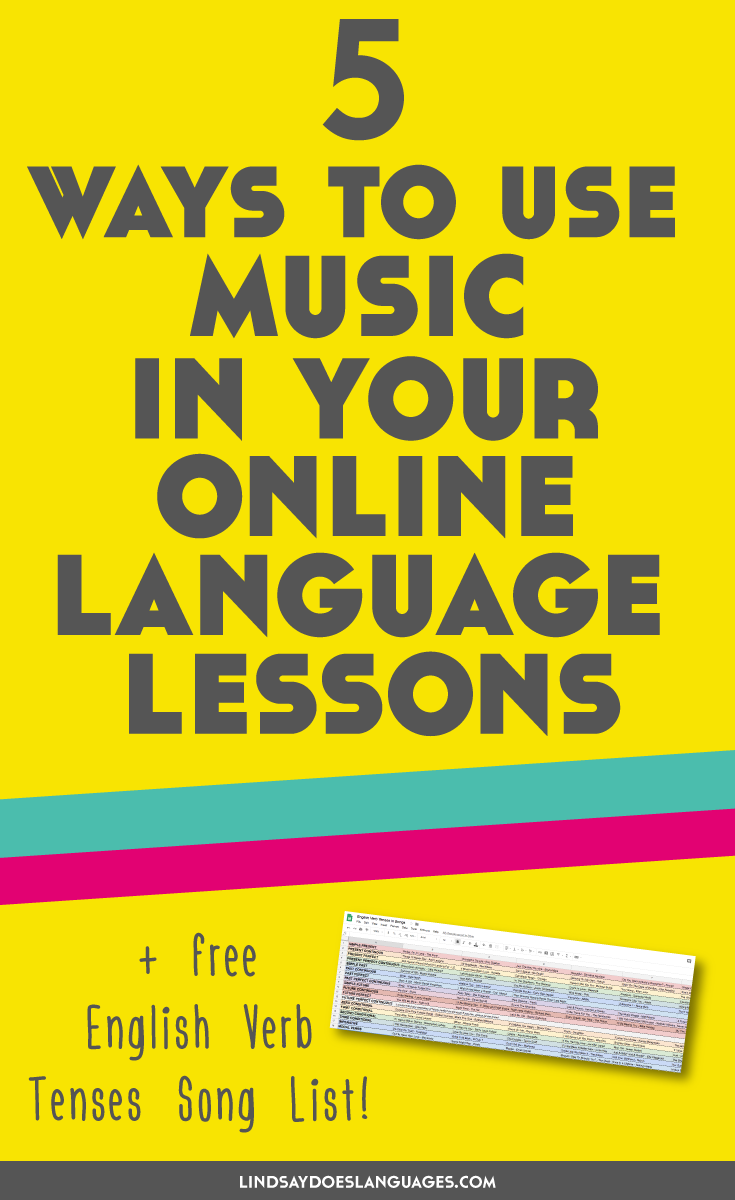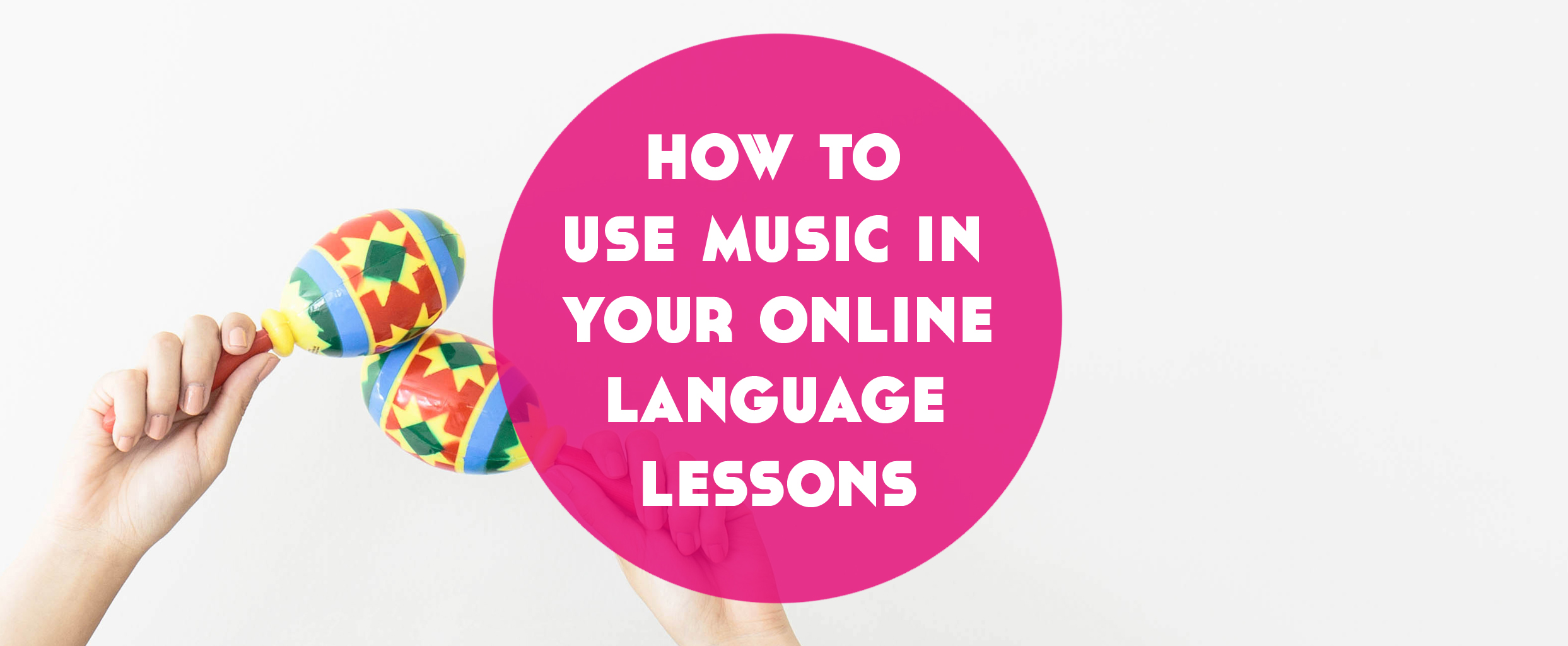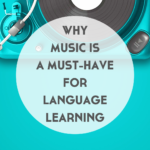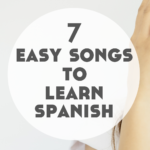August 14th, 2018
5 Ways to Use Music in Your Online Language Teaching
Music is a great tool for language learners, which means it’s awesome for your language teaching too. Curious how to do this? Here’s 5 ways to use music in your online language teaching.

Music has always played an important role in my language learning, which means when I started tutoring languages, it naturally had a place there too. I love using songs and lyrics to bring fun to lessons, show examples of vocabulary and grammar we’ve studied, and encourage students to engage with culture too.
Why to use music in your online language teaching
Language is more than just words. Culture is a wonderful thing to introduce to your students, however, it’s not always easy. Sometimes students aren’t expecting to be introduced to culture and so don’t respond well to that being incorporated into your lessons with them. Unfamiliar makes for unenjoyable for many. And we want your students to enjoy learning with you!
Music however is familiar. And whether or not there songs you’re using are familiar for students, they’ll likely enjoy the chance for something a little different in lessons beyond the textbook.
As well as being familiar, music can be a helpful tool for remembering things too. It’s the reason that language resources such as Earworms exist.
And even beyond that, there’s one more key thing: music makes language learning fun. Even if your students don’t like the song that you’ve found that shows good examples of how to use that verb tense, it’s going to be more enjoyable than trying to drum it in through textbooks again and again.
How to use music in your online language teaching
When you’re teaching languages online and you want to use music, at first it seems like there’s a huge barrier in the way: the tech. There’s a simple fix to help us out here.
You have two choices:
1. You can send a link to the song to your students before lessons. Ask them to listen before the live lesson with you.
Of course, the problem here is that they may forget the song by the time the lesson comes around, or they may even forget to listen altogether. So not the best option.
2. Your best option is to listen to the song together live during your lesson.
Depending on which tool you’re using to teach (Skype, Zoom, Hangouts etc), there’ll be different ways around this.
Zoom is great because it allows you to share your screen and computer audio at the same time. This means that you can play the song on YouTube, Spotify or elsewhere, and by sharing your screen and computer audio, students will be able to hear the song at the same time as you. Woohoo!
Alternatively, if you’re using Skype or another tool, you’ll likely need an external tool to handle this. My favourite is TogetherTube, which allows you to watch YouTube videos in real time with your students, and is completely free.
If you’re using lyrics in your online language teaching in a way that requires students to be active during the song, then be sure to send them a copy of the file they need first as well. For example, if you’re using Cloze Those Lyrics or Shuffle Mode below, you’ll need to get the Google Docs or Google Slides file over to students before you get the song ready to play.
Now we know why music can be a useful tool for language teaching and how we can manage the tech when doing it online, let’s take a look at five ways to use music in your online language teaching.
Related: How to Know When Language Teaching Online is Right for You (+ What to Expect When You Start)
Cloze Those Lyrics
Cloze activities are the classic example when it comes to music and lyrics for language learning. However, there are a couple of ways you can change this up.
The first way is to delete a handful of words from lyrics and replace them with a blank space. Students have to listen to the song and fill in the blanks. Depending on how generous you’re feeling or the level of your students, you can leave a list of the words on the page or you can take them away completely.
Another way to play with cloze exercises is to replace the blank spaces with images to help students guess what they hear. This idea works particularly well if you have a song with some key vocab that you’ve been studying.
Shuffle Mode
Another way to bring lyrics into your lessons is to shuffle them up.
Find a song that teaches some useful vocabulary or grammar to your students and grab a copy of the lyrics. Now we’re going to split those lyrics up.
Keep lyrics in pairs, chunks, or even single lines, depending on the ability of your students. Now jumble them up on a Google Slides slide for students to listen to the song and reorder the lyrics as they do so.
One thing worth considering here is to not pick a song that’s overly repetitive as this will be quite tedious for this activity.
Rhyme Time
Using a tool such as Rhyme Brain, encourage students to write their own song.
You can find free instrumental music on sites like Incompetech that can help to give students some kind of structure to work with.
What I love about this activity is how open and flexible it is.
You can use this with beginner students to put a simple introduction or early conversation role play to music, which can help them to remember.
Try it with intermediate students to practise a particular verb tense or grammar point.
Or use it with advanced students to give them a more motivating task when it comes to producing the language themselves.
Lots of fun!
What Happened?
Listen to a song with students, then invite them to report to you the main story of the song. What were the emotions of the singer? Why are they feeling this way? How did the music help you to understand this?
This is one for more advanced students and works really well with songs that tell a story of some kind. For example Up the Junction by Squeeze, Common People by Pulp, Stan by Eminem or Travellin’ Soldier by the Dixie Chicks. In fact, country songs are often really great for narratives. You could do this activity with almost any Johnny Cash song.
Focus Music
The final idea I want to mention here is to find a collection of songs that each focus on a different grammar point or verb tense. Keep them listed somewhere (don’t worry if you don’t have any songs for a particular tense/point, you can always add more later). By doing this, you’ll always have a fun way to see what you’re teaching in a real example of the language. Yay!
For example, Still Haven’t Found What I’m Looking For by U2 is great to show plenty of examples of the present perfect tense in English.
What I love about this is that it’s a great way to use music in your online language teaching for any student ability.
Related: 3 Big Creative Reading Ideas for Teaching Languages Online
Want more like this?
If you want to get creative with all aspects of your online language teaching, you can get the entire ebook, 100 Creative Ideas for Online Language Teachers. Yay!
If transferring your teaching online is blowing your mind a little bit, 100 Creative Ideas for Online Language Teachers is the ebook for you.
With Creative Ideas to use within lessons as well as organise + promote your teaching, the ebook + online bonus content including templates, videos + examples is a must for all online language teachers.
Click here to learn more + get your copy now.







